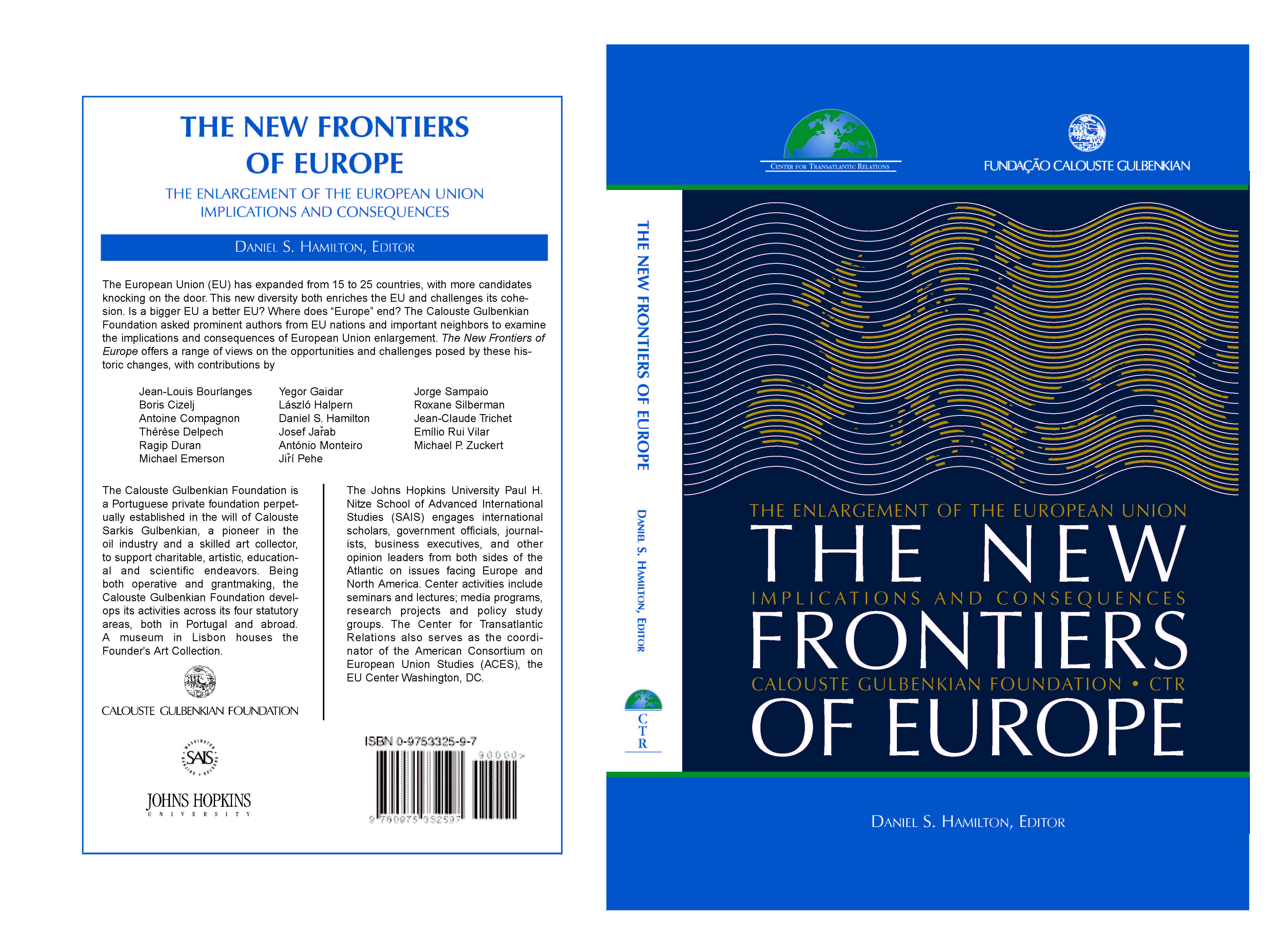
Daniel S. Hamilton, Editor
The European Union has expanded from 15 to 25 countries, with more candidates knocking on the door. This new diversity both enriches the EU and challenges its cohesion. Is a bigger EU a better EU? Where does “Europe” end? The Calouste Gulbenkian Foundation asked prominent authors from EU nations and important neighbors to examine the implications and consequences of European Union enlargement. The New Frontiers of Europe offers a range of views on the opportunities and challenges posed by these historical changes. Contributors include: Jean-Louis Bourlanges, Boris Cizelj, Antione Compagnon, Therese Delpech, Ragip Duran, Michael Emerson, Yegor Gaidar, Laszlo Halpern, Daniel S. Hamilton, Josef Jarab, Antonio Monteiro, Jiri Pehe, Jorge Sampaio, Roxanne Silberman, Jean-Claude Trichet, Emilio Rui Vilar, and Michael P. Zuckert.
Chapter-1 Limits and Frontiers of the New Europe, Jorge Sampaio
Chapter-2 The Enlargement of the European Union:Challenges and Consequences, António Monteiro
Chapter-3 What Frontiers for What Kind of Europe? Jean-Louis Bourlanges
Chapter-4 Immigrants in the Heart of Europe: Can A Common European Migration Policy be Avoided? Roxane Silberman
Chapter-5 The EU’s Federalism Deficit: A Madisonian Perspective, Michael P. Zuckert
Chapter-6 Culture or the koine of Europe, Antoine Compagnon
Chapter-7 Culture, Knowledge and European Unity, Josef Jarab
Chapter-8 EU Enlargement: Challenges and Opportunities, Jean-Claude Trichet
Chapter-9 European Enlargement and Transition from Plan to Market, László Halpern
Chapter-10 The European Research Area and EU Enlargement, Boris Cizelj
Chapter-11 The Strategic Implications of Enlargement, Daniel S. Hamilton
Chapter-12 Enlarging Europe’s Strategic Vision, Thérèse Delpech
Chapter-13 Central European Views of EU Defense and Foreign Policy Jirí Pehe





